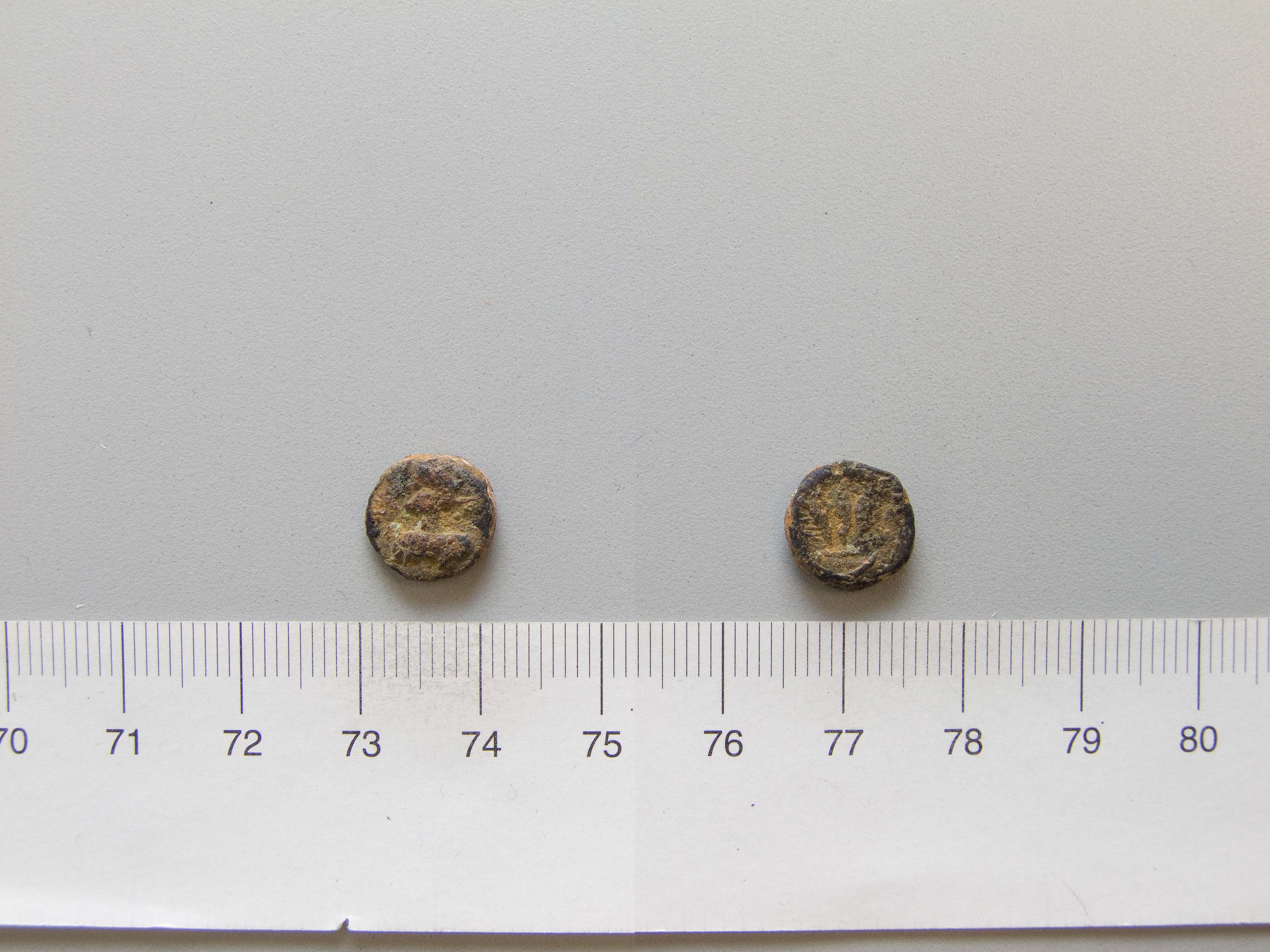The locally struck Palmyrene coins as identity markers
By Research assistant Nathalia B. Kristensen.

Coins were the mass media of the ancient world and provide us with a variety of representations connected to civic identities. In Antiquity cities would place imagery associated with local festivals, religion, public buildings, history and myths on their coinage. Palmyra was in that sense no different from other cities, but the images displayed on the Palmyrene coins and the representations of them were in a number of ways different from those of the surrounding regions.
The Palmyrene coins were small in size, measuring between 9 and 14 mm in diameter, and weighing no more than 2.7 g. The Palmyrene coins did bear the portrait of the Roman emperor, nor are Roman emperors mentioned on the legends on the coins. In fact, only very few of the coins bear inscriptions and those that do exclusively mention the name of the city in Greek, ΠAΛΜYΡΑ. It was customary in the Roman East to write the legends in Greek. However, given the bilingual nature of Palmyrene public life and the importance of the local Aramaic tongue in the city, we could have expected to see bilingual legends on the coins, as is the case on a few countermarks attributed to the city.
Both the obvers and reverse of the coins have representations of local gods, their attributes, or animals connected to the religious sphere (fig. 1). However, identifications of the specific gods proves difficult. The coins mostly depict heads in profile of deities wearing nimbuses, animals associated with local deities, and seated goddesses with lions. Religious reliefs from the city reveal that several goddesses could be seen together with a lion, such as Tyche, Atargatis, Astarte, and Cybele, and several gods would also wear nimbuses. This is perhaps most famously seen on the relief now in the Louvre (inv. no. AO 19801) depicting the Triad of Baalshamin, where Aglibôl and Malakbêl both wear nimbuses. A single series of coins with very similar imagery can identified with certainty. This series is also one of the only ones bearing the name of the city. On one side we see a winged Nike holding either a wreath or a palm branch next to a betyl (sometimes with a weight mounted on top) and the other side depicts the busts of three gods; the middle god wears a kalathos, while the two gods beside him wears nimbuses. Here we see the Triad of Bêl. Bêl is placed in the middle, easily identifiable with his distinct headdress, and Aglibôl and Yarhibôl are placed on either side. Other coins show the bust of a goddess wearing a mural crown; a common image on coins both in the Roman East and Parthia, where she is identified as Tyche. However, in Palmyra it has been argued that she should instead be seen as the goddess Gad, the Aramaic equivalent to Tyche.
Palmyra, or more precisely the Palmyrene elite and governing body, who authorized the minting of the coins, chose a distinct imagery on the coins, which was local, while simultaneously drawing on the influence and iconography of the Roman East and Parthia. The winged Nike seen on the Palmyrene coins was also seen on coins from the eastern provinces. However, Nike is only depicted next to a betyl on the Palmyrene coins. While being influenced by the traditions of the Roman Near East and Parthia, the city approached the motifs in a very local way and held on to communal traditions and imagery, which distinctly set the city apart from its neighbors and marked its place between the Roman East and Parthia.
Further reading
Kaizer, T. 2007. ‘Palmyre, cité grecque’? A question of coinage. KLIO, 89(1): 39–60.
Kristensen, N. B. forthcoming a. ‘Money makes the World go round’. Production and Circulation Patterns of the Palmyrene Coinage, in R. Raja (ed.), The Small Stuff of the Palmyrenes. The Coins and Tesserae of Palmyra. Turnhout: Bepols.
Kristensen, N. B. forthcoming b. A Symbol of a City. The iconography of the Palmyrene coinage, in M. K. Heyn and R. Raja (eds.), Individualising the dead: Attributes in Palmyrene Funerary Sculpture. Turnhout: Bepols.
Kristensen, N. B. and Raja, R. Palmyrene Coins, in R. Raja (ed.), The Oxford Handbook on Palmyra. Oxford: Oxford University Press.
